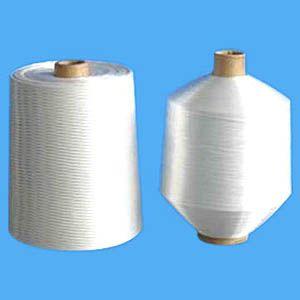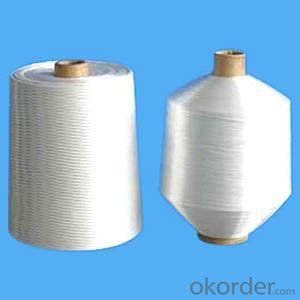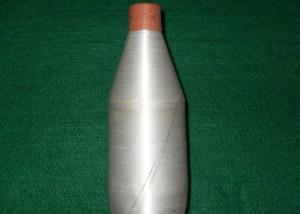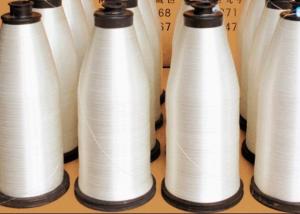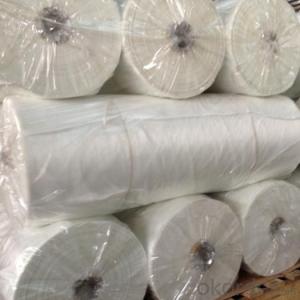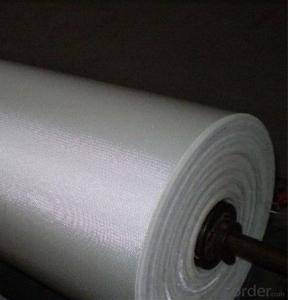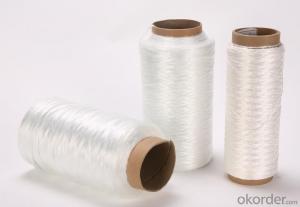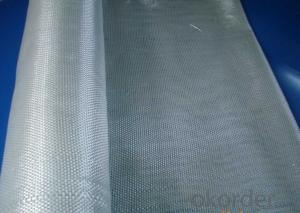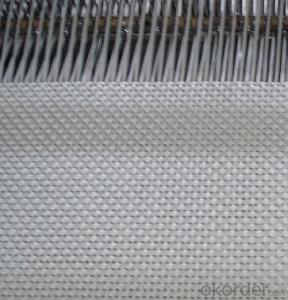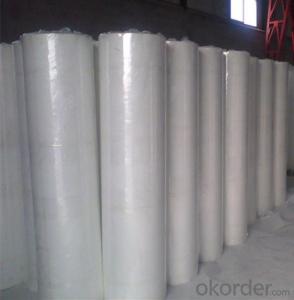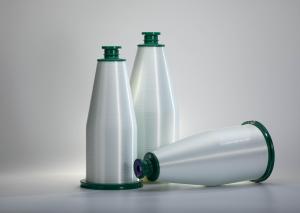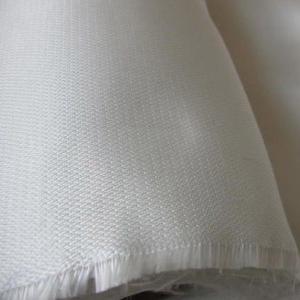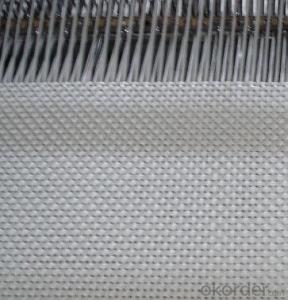Fiberglass Yarn - High Quality Fiberglass Yarn
- Loading Port:
- China Main Port
- Payment Terms:
- TT or L/C
- Min Order Qty:
- 1Ton kg
- Supply Capability:
- 100000Kg/Month kg/month
OKorder Service Pledge
OKorder Financial Service
You Might Also Like
Packaging & Delivery of Fiberglass Yarn
Specifications of Fiberglass Yarn
Glass fiber filament yarn
corrosion resistant, heat resistance
little moisture absorption
low thermal conductivity
Fiberglass yarn is made from 4-9um fiberglass filameters which are the gathered and twisted into one finished yarn. It is widely used in productions of fabric as finished well as electrical wrapping materials, engineering materials, textured yarn, woven electronic grade fabric and so on.
Packaging & Delivery of of Fiberglass Yarn
Packaging Detail: carton and pallet
Delivery Detail: within 15days after order placed
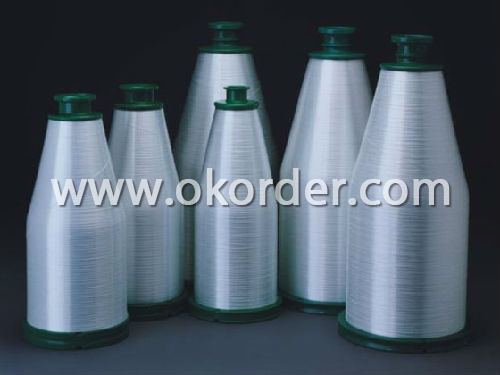
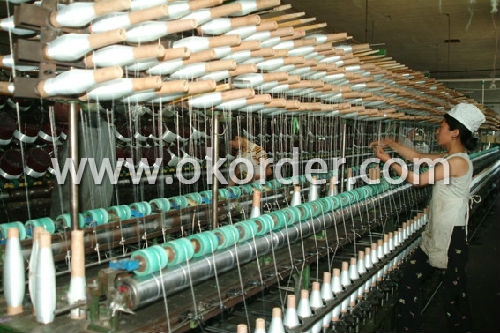
- Q: Can fiberglass yarn be used in combination with other materials?
- Yes, fiberglass yarn can be used in combination with other materials. It is commonly mixed with resins, plastics, or other fibers to enhance the strength, durability, and flexibility of various products such as composites, fabrics, insulation, and reinforcements in construction, automotive, and aerospace industries.
- Q: What is the average lifespan of fiberglass yarn?
- The average lifespan of fiberglass yarn can vary depending on various factors such as its quality, usage, and maintenance, but it can generally last for several years to decades when properly taken care of.
- Q: What is the melting point of fiberglass yarn?
- The melting point of fiberglass yarn can vary depending on its composition and manufacturing process. Generally, fiberglass yarn is made from glass fibers that have been melted and drawn into fine strands. These strands are then twisted or plied together to form a yarn. The melting point of the glass fibers used in fiberglass yarn is typically around 1,400 to 1,600 degrees Celsius (2,552 to 2,912 degrees Fahrenheit). However, it is important to note that the melting point of the yarn itself may be lower than the melting point of the individual fibers, as the twisting or plying process can affect the overall thermal properties of the material. It is also worth mentioning that while fiberglass yarn has a high melting point, it can still experience degradation or damage at lower temperatures. For example, prolonged exposure to temperatures above 200 degrees Celsius (392 degrees Fahrenheit) can cause the yarn to lose its strength and structural integrity. Therefore, it is crucial to consider the specific application and temperature requirements when working with fiberglass yarn to ensure its optimal performance and longevity.
- Q: Can fiberglass yarn be used for wind turbine manufacturing?
- Yes, fiberglass yarn can be used for wind turbine manufacturing. Fiberglass yarn is a strong and durable material that is commonly used in various industries, including aerospace, automotive, and construction. Its high strength-to-weight ratio and resistance to corrosion make it an ideal material for manufacturing wind turbine components. In wind turbine manufacturing, fiberglass yarn can be used to create composite materials, such as fiberglass-reinforced plastics (FRP), which are commonly used for the construction of wind turbine blades. The fiberglass yarn is typically woven into a fabric and combined with a resin matrix to form a composite material that is lightweight, yet strong enough to withstand the forces and stresses experienced by wind turbine blades. The use of fiberglass yarn in wind turbine manufacturing offers several advantages. Firstly, fiberglass is non-conductive, which is crucial for wind turbines as they operate in high-voltage environments. Additionally, fiberglass is resistant to environmental factors such as moisture, UV radiation, and temperature fluctuations, making it highly durable and suitable for long-term outdoor use. Furthermore, fiberglass yarn can be easily manipulated and molded into complex shapes, allowing for the production of aerodynamically optimized wind turbine blades. The flexibility of fiberglass yarn also enables the design and manufacturing of longer blades, which can capture more wind energy and improve the overall efficiency of the wind turbine. Overall, fiberglass yarn is a suitable material for wind turbine manufacturing due to its strength, durability, non-conductive properties, and ease of fabrication. Its use in wind turbine blade production contributes to the development of more efficient and reliable wind turbines, which play a crucial role in the generation of clean and renewable energy.
- Q: Can fiberglass yarn be used in the production of carpeting?
- Yes, fiberglass yarn can be used in the production of carpeting. Fiberglass yarn is a strong and durable material that can withstand heavy foot traffic and other forms of wear and tear. Its resistance to moisture, chemicals, and fire also makes it a desirable choice for carpeting applications. In addition, fiberglass yarn can be used to create various styles and textures in carpet designs, providing versatility in terms of aesthetics. Overall, the use of fiberglass yarn in carpet production offers several advantages in terms of durability, longevity, and design options.
- Q: Can fiberglass yarn be used in construction applications?
- Construction applications can indeed utilize fiberglass yarn. This material, known for its robustness and endurance, exhibits resistance to corrosion, chemicals, and extreme temperatures. Its common usage in construction involves reinforcing concrete and other building materials. Fiberglass yarn can be woven into fabrics or mats, which serve to strengthen walls, floors, roofs, and other structural components. By doing so, it fortifies the construction, rendering it more resistant to cracks, fractures, and other types of damage. Furthermore, fiberglass yarn boasts a lightweight nature and ease of handling, making it highly convenient for construction projects. In summary, fiberglass yarn qualifies as a versatile substance capable of significantly augmenting the potency and longevity of construction applications.
- Q: Can fiberglass yarn be used for making socks?
- No, fiberglass yarn is not suitable for making socks as it is not soft or comfortable for the skin.
- Q: Does fiberglass yarn have any special properties?
- Yes, fiberglass yarn has several special properties. It is known for its high strength-to-weight ratio, excellent heat resistance, and electrical insulation properties. It is also resistant to chemicals and has low thermal conductivity. Additionally, fiberglass yarn is highly durable and has good dimensional stability, making it suitable for various applications such as in the automotive, aerospace, and construction industries.
- Q: Can fiberglass yarn be used in the production of belts and straps?
- Yes, fiberglass yarn can be used in the production of belts and straps. Fiberglass yarn is known for its strength and durability, which makes it a suitable material for manufacturing products that require high tensile strength and resistance to wear and tear. Belts and straps made with fiberglass yarn are commonly used in various industries such as automotive, aerospace, and heavy machinery, where reliability and longevity are crucial. The fiberglass yarn can be woven or braided into a strong, flexible, and lightweight fabric, making it ideal for applications that require high load-bearing capacity. Additionally, fiberglass yarn can also provide excellent resistance to heat, chemicals, and UV radiation, further enhancing the suitability of this material for belt and strap production.
- Q: Is fiberglass yarn suitable for making electrical insulators?
- Yes, fiberglass yarn is suitable for making electrical insulators.
1. Manufacturer Overview
| Location | Chongqing, China |
| Year Established | 1971 |
| Annual Output Value | Above US$ 50 Million |
| Main Markets | North America, Eastern Europe, Southeast Asia, Mid East, Eastern Asia |
| Company Certifications | ISO9001 |
2. Manufacturer Certificates
| a) Certification Name | |
| Range | |
| Reference | |
| Validity Period |
3. Manufacturer Capability
| a) Trade Capacity | |
| Nearest Port | Chongqing |
| Export Percentage | 40%-50% |
| No.of Employees in Trade Department | 21-50 People |
| Language Spoken: | English |
| b) Factory Information | |
| Factory Size: | Above 2000,000 square meters |
| No. of Production Lines | Above 4 |
| Contract Manufacturing | |
| Product Price Range | Average |
Send your message to us
Fiberglass Yarn - High Quality Fiberglass Yarn
- Loading Port:
- China Main Port
- Payment Terms:
- TT or L/C
- Min Order Qty:
- 1Ton kg
- Supply Capability:
- 100000Kg/Month kg/month
OKorder Service Pledge
OKorder Financial Service
Similar products
Hot products
Hot Searches
Related keywords
